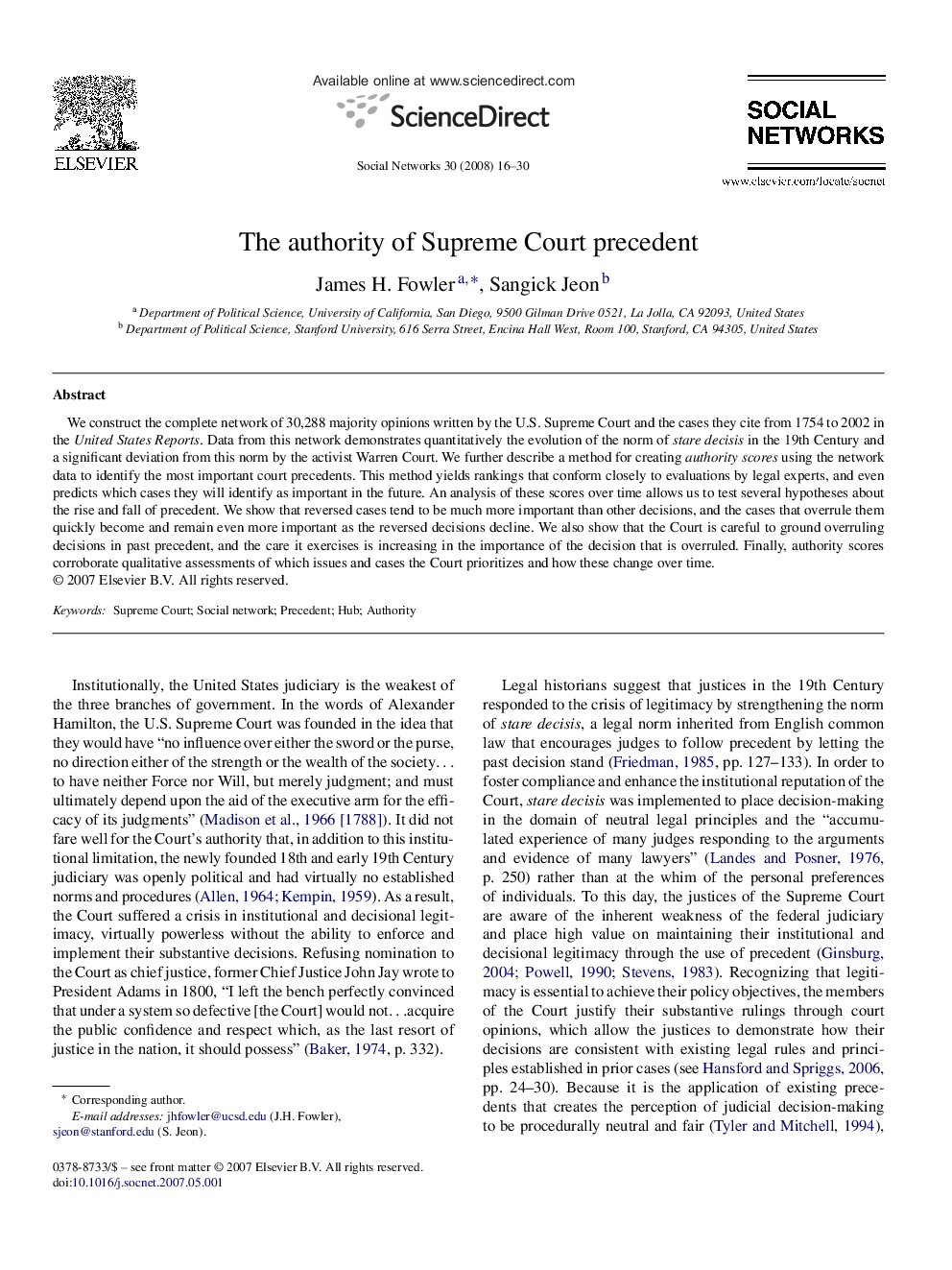| Article ID | Journal | Published Year | Pages | File Type |
|---|---|---|---|---|
| 1129612 | Social Networks | 2008 | 15 Pages |
We construct the complete network of 30,288 majority opinions written by the U.S. Supreme Court and the cases they cite from 1754 to 2002 in the United States Reports. Data from this network demonstrates quantitatively the evolution of the norm of stare decisis in the 19th Century and a significant deviation from this norm by the activist Warren Court. We further describe a method for creating authority scores using the network data to identify the most important court precedents. This method yields rankings that conform closely to evaluations by legal experts, and even predicts which cases they will identify as important in the future. An analysis of these scores over time allows us to test several hypotheses about the rise and fall of precedent. We show that reversed cases tend to be much more important than other decisions, and the cases that overrule them quickly become and remain even more important as the reversed decisions decline. We also show that the Court is careful to ground overruling decisions in past precedent, and the care it exercises is increasing in the importance of the decision that is overruled. Finally, authority scores corroborate qualitative assessments of which issues and cases the Court prioritizes and how these change over time.
